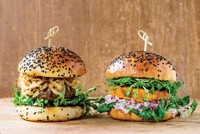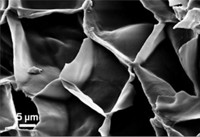Advertisement
Grab your lab coat. Let's get started
Welcome!
Welcome!
Create an account below to get 6 C&EN articles per month, receive newsletters and more - all free.
It seems this is your first time logging in online. Please enter the following information to continue.
As an ACS member you automatically get access to this site. All we need is few more details to create your reading experience.
Not you? Sign in with a different account.
Not you? Sign in with a different account.
ERROR 1
ERROR 1
ERROR 2
ERROR 2
ERROR 2
ERROR 2
ERROR 2
Password and Confirm password must match.
If you have an ACS member number, please enter it here so we can link this account to your membership. (optional)
ERROR 2
ACS values your privacy. By submitting your information, you are gaining access to C&EN and subscribing to our weekly newsletter. We use the information you provide to make your reading experience better, and we will never sell your data to third party members.
Education
Newscripts
Breaking Bread, Building Teeth, Chocolate On The Brain
by Sarah Everts
March 5, 2007
| A version of this story appeared in
Volume 85, Issue 10

Breaking Bread
A recent paper with the keywords "bread, crust, kinetics" seemed like exactly the type of story Newscripts could sink its teeth into.
Writing in the Journal of Agricultural & Food Chemistry, Ton van Vliet, from the Wageningen Centre for Food Sciences, in the Netherlands, put forth a major conundrum in the science of BREAD CRUSTS.
When bread sits on a shelf, water from its spongy center travels outward, hydrating the crust and negating the ecstatic crunch that stems from the proverbial breaking of bread.
Although North American consumers may be keen to munch on supple crusts, in Europe a soft shell is a serious faux pas. Van Vliet points out that in France some bread makers are forced to make several batches of baguette a day to keep the right moisture/crunchy balance for discriminating palates.
"We are very concerned about the crispiness of bread," van Vliet told Newscripts. "There should be many crackles for complete enjoyment."
One strategy to keep a dry crust without desiccating the interior, currently in evaluation by the bread industry, is to swab the exterior of the loaf with enzymes that break down gluten, van Vliet explains. Breaking down gluten releases water, giving the crust an antihydration head start.
But van Vliet's current paper is actually all about bread math, specifically the model used to examine water sorption to the crust. By using a Langmuir equation, van Vliet finds that the rate-limiting step for water transfer is related to the properties of the crust—not the moist interior. This suggests that tweaking the physics and chemistry of the crust is the only way to prevent its softening, says van Vliet.
Newscripts did soak one final nugget out of the paper, namely the bread recipe from the Material and Methods section.
Building Teeth
Now if biting into a super-hard crust spurs a dental crisis, never fear. Japanese researchers report in Nature Methods that they have bioengineered a MOUSE MOLAR from stem cells. Furthermore, they show that the tooth develops normally after being grafted into a dental cavity created by pulling out a normal mouse tooth.
The authors write that this study "provides the first evidence of a successful reconstruction of an entire organ via the transplantation of bioengineered material."
While Newscripts applauds this mouth milestone, we are not yet convinced about the aesthetics of mouse incisors in humans. Will mouse teeth really put down roots in the annals of dental fashion? Will they follow in the hallowed footsteps of dentures, gold plating, and the ancient Mayan tradition of embedding precious stones in a tooth's center? To settle in human mouths, these bioengineered teeth will have to first overcome the same challenge faced by transplantation of any nonhuman organ: rejection by our enthusiastic immune system.

Chocolate On The Brain
As if Newscripts really needs another excuse to pad its waistline with chocolate delights, researchers supported by the Mars chocolate bar company report that CHOCOLATE might benefit the brain. U.S. and English scientists announced at last month's American Association for the Advancement of Science meeting that chocolate-derived flavanols boost mouse memory and brain blood flow.
This putative perk of chocolate-derived flavanols adds to previously reported cardiovascular benefits and last summer's study in the Journal of Nutrition that suggested these chocolate components might make for a good sunscreen.
Although Newscripts celebrates the cacao bean and all of its chemistry, it does question whether the health benefits of consuming chocolate to absorb its flavanols outweigh the health cost of chocolate's high sugar and fat content—especially given the rising rates of obesity.
In fact, Newscripts is tempted to enable further pondering of this challenging question with a square of deep dark chocolate. Mmmm.
This week's column was written by Sarah Everts. Please send comments and suggestions to newscripts@acs.org.





Join the conversation
Contact the reporter
Submit a Letter to the Editor for publication
Engage with us on Twitter